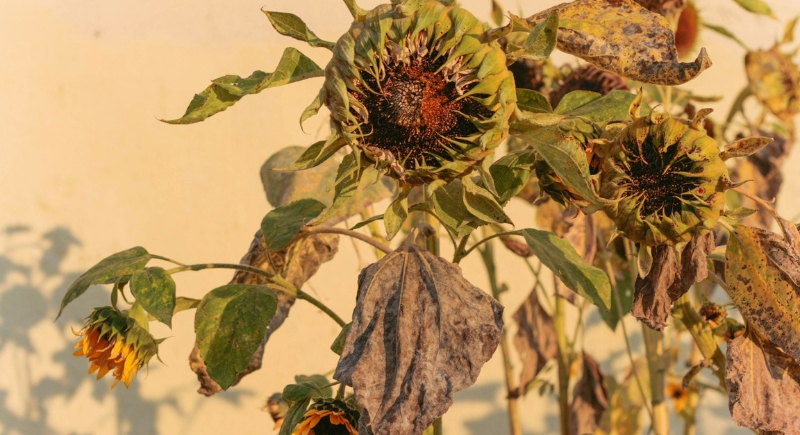Top Veggies That Thrive in Scorching Summer Gardens
This year’s summer forecast points to record-breaking temperatures across much of the U.S. That’s probably great news for businesses on the beach but a little less exciting if you’ve got plants that wilt at the first sign of a heatwave. Heat forces plants into survival mode. They will either stop producing leaves and fruit, scorch under direct sunlight, or just give up entirely.
But not every crop waves a white flag when the temperature climbs. In fact, certain vegetables see those hot, dry days as an open invitation to grow. The key is knowing which ones they are and how to give them the best shot at thriving.
Understanding Plant Stress in Heat

Image via Unsplash/Anna Zakharova
Plants react to heat in predictable ways. Wilted leaves often signal water stress, though adding more water isn’t always the answer. Sometimes the best fix is a temporary break from the afternoon sun. Bolting is another common reaction. This happens when plants shift from growing leaves or fruit to sending up flowers and seeds, which leaves the edible parts bitter.
Sun scald, a plant’s version of sunburn, can leave pale or white spots on fruit like tomatoes. While sunburn won’t always kill a plant, it increases stress and opens the door to pests and disease. Choosing heat-resistant varieties minimizes these risks and keeps harvests coming.
Leafy Greens and Vines
Many leafy greens wither in the heat, but a few have developed a serious tolerance for it. Kale is one such vegetable that continues to grow through triple-digit days. Similarly, collards, a staple in the South, stay firm and productive even in the full sun.
For a more unique option, consider Malabar spinach. This vining plant from India has a taste similar to traditional spinach but loves the heat that would ruin the real thing. It will happily climb a trellis all summer long.
Vining plants are a great way to use vertical space and provide some shade. Luffa offers a fun duality; you can eat the young gourds or let them dry on the vine to create a household sponge.
For beans, try tepary, a variety native to the desert Southwest that is perfectly adapted to long, dry summers. Or the Asian favorite, yardlong, that produces tender pods over a foot long and performs well with less water once established.
The All-Stars of a Hot Garden

Image via Unsplash/Wouter Supardi Salari
Some plants are practically built for high temperatures. Okra is a classic example. It’s originally from Ethiopia, so the hot, dry air doesn’t slow it down. It is best to stick to spineless varieties for easier harvesting. Corn, while a heavy feeder, tolerates temperatures well above 100°F. It needs warm soil to germinate and will reward you with tall stalks and full ears if planted after the danger of spring frost is gone.
In the same vein, both squash and melons love the heat. The large leaves on summer squash, like zucchini and winter squash like butternut, provide natural shade that protect the fruit from sunburn. Melons, including cantaloupe and watermelon, share a similar resilience.
Plants That Reward With a Big Harvest
A few other plants round out the perfect list for a summer garden. Soybeans, a bush bean, enjoy a warm summer and produce well in groups. You can harvest them green for fresh edamame or let them dry for use in tofu or soy milk. They don’t need trellising; just deep, consistent watering.
Sweet potatoes, too, come from tropical climates and grow aggressively once their slips are established. They tolerate drought well and can be grown in beds or containers. The lush vines add visual interest while tubers develop underground over about four months.
Finally, peppers and eggplant all appreciate warm nights and long days. They may need some shade during peak afternoon heat to prevent blossom drop, but otherwise, they produce reliably. Mulch around the base to keep roots cool and water them deeply to promote strong growth.
Keeping Heat-Lovers Happy

Image via Unsplash/Stephanie Moody
Planting the right crops is just one part of the battle. You also need a few key techniques to help your garden survive the intense heat. Even the toughest plants benefit from smart care.
Instead of watering frequently, give your plants a long, deep soak. This encourages the roots to grow deeper and makes the plant more resilient during dry spells. Water early in the morning before the sun gets too hot to minimize evaporation.
A generous layer of organic mulch, like straw or shredded leaves, around the base of your plants is a game-changer. Mulch helps to keep the soil cool and moist, and reduces the amount you need to water.
For some plants, like peppers and tomatoes, a little afternoon shade is a huge help. You can use shade cloths or strategically plant a taller crop, like corn or luffa, to cast a shadow on more sensitive plants.
A hot garden does not have to be a source of frustration. By choosing the right plants and using a few simple techniques, you can grow a garden that flourishes under the summer sun.